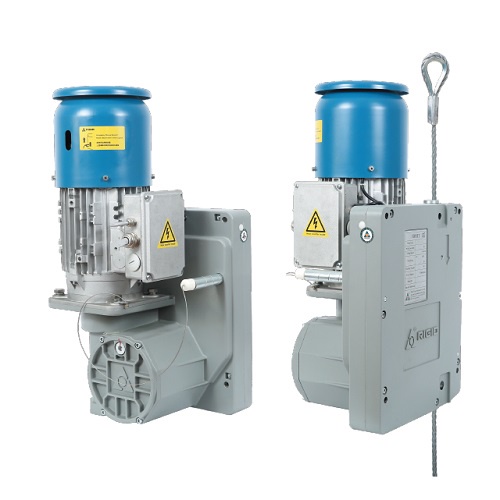What Do You Need to Know About Traction Hoists for Suspended Platforms?
When it comes to construction and maintenance tasks that require working at heights, suspended platforms offer a safe and efficient solution. To ensure the functionality and safety of these platforms, a crucial component is the traction hoist.
A traction hoist plays a pivotal role in raising and lowering scaffold hoist platform, enabling workers to access various levels of a structure with ease. This hoist mechanism operates on the principle of friction, utilizing a motorized pulley system to move the suspended platform along a vertical or inclined track. Here are some essential points to consider:
Efficiency and Load Capacity
Traction hoists are known for their exceptional efficiency and high load capacity. They can efficiently transport heavy materials, tools, and workers to different heights, making them indispensable in large-scale construction projects. The friction-based design minimizes the effort required to move the platform, optimizing productivity.
Safety Features
Modern traction hoists are equipped with advanced safety features to ensure the well-being of workers. These features may include emergency stop buttons, overload protection, anti-tilt mechanisms, and redundant braking systems. Regular maintenance and inspections are essential to keep these safety features functioning properly.
Components of Traction Hoists
A typical traction hoist for suspended platform consists of several components, including the electric motor, gearbox, brake system, and the pulley mechanism. The electric motor provides the necessary power, while the gearbox amplifies the motor's torque to move the platform.
The brake system ensures controlled stopping, preventing sudden jerks or movements. The pulley mechanism, often equipped with multiple grooves, maintains the platform's stability and prevents slippage.
Maintenance and Inspection
Regular maintenance is crucial to keep traction hoists in optimal working condition. Scheduled inspections should encompass checking the brake system, lubricating moving parts, and examining electrical connections. Any signs of wear and tear should be promptly addressed to prevent operational issues and ensure worker safety.
Environmental Considerations
Traction hoists have become increasingly energy-efficient and environmentally friendly. Some models incorporate regenerative braking systems, which convert excess energy back into usable power. This not only reduces energy consumption but also minimizes the hoist's impact on the environment.
As technology continues to advance, you can expect traction hoists to become even more efficient and eco-friendly, contributing to safer and more sustainable working conditions for professionals in various fields.


No comments yet